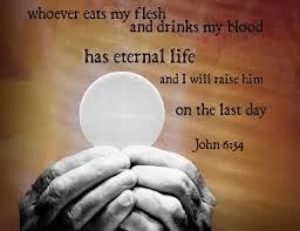Understanding the Catholic Mass: A Guide for Newcomers and Curious Minds
Many Catholics and those exploring the Catholic faith may find themselves unfamiliar with the sequence of the Mass or uncertain about the meaning behind some of the rituals and wonder what to do at Mass. Why does the Catholic Church perform these specific actions during Mass? What’s the historical or spiritual significance behind them? This post will provide an introduction to the basics of what to do during Mass, with the goal of helping those who are unsure better understand this sacred ceremony.
In the early Christian Church, believers would come together in small, intimate settings for the “breaking of the bread” (Acts 2:42). This was far more than just a communal meal; it was a deeply spiritual act, allowing them to partake in the mystery of Christ’s sacrifice.
Today, the Catholic Mass preserves this tradition. It is not merely a gathering of the faithful but a profound event where Catholics believe in the Real Presence of Jesus in the Eucharist. During the consecration, the bread and wine truly become Christ’s Body and Blood, making the Mass a sacred encounter between heaven and earth. This sets it apart from many Protestant services, which focus primarily on community worship, prayer, and sermons, but do not include the Real Presence or the sacrificial nature of the Mass. Listen to this former protestant pastor walk through the history of the Catholic Mass
What to Do When Entering the Church
As you enter the church, gently dip your forefinger into the holy water font and make the sign of the cross. This action symbolizes spiritual cleansing, a reminder of your baptism. During the *Penitential Rite* at the beginning of Mass, we take a moment to reflect on our sins and ask for God’s forgiveness, saying, *”Lord have mercy, Christ have mercy, Lord have mercy.”*
When leaving after Mass, there’s no need to dip into the holy water font again—this is a gesture reserved for entering.
Genuflecting: A Sign of Reverence
Before you sit down, it’s customary to genuflect by bending one knee to the ground. This is a gesture of adoration for the Lord, particularly in recognition of His real presence in the Eucharist. Genuflection should be directed toward the Tabernacle, where the Eucharist is stored. If you cannot see the Tabernacle, then genuflecting toward the altar is acceptable.
The *Our Father* and Hand-Holding
In recent years, it’s become common for people to hold hands during the *Our Father*. While this may seem like a harmless or even kind gesture, the Church discourages it. The focus of this prayer should be on unity with God, and distractions like hand-holding can take away from that focus. It’s better to close your eyes and reflect on the words of the prayer, which Jesus Himself gave to us.
Standing, Sitting, or Kneeling?
In some parishes, parishioners are asked to remain standing after the *Lamb of God* is sung or recited. This is sometimes described as a sign of unity. However, true unity for Catholics is found in the body of Christ, especially during the Eucharistic Prayer when the priest says, *”Lift up your hearts,”* and we respond, *”We lift them up to the Lord.”*
The official teaching of the Church allows for individuals to take whatever posture they are most comfortable with—whether that’s standing, sitting, or kneeling—so long as it helps you enter into prayer.
Receiving Communion
 Receiving Communion is the most profound moment of the Mass. You are about to receive the actual body and blood of Jesus Christ. This sacred act deserves full attention and reverence. Unfortunately, it’s common to see people distracted—greeting others or glancing around—while in line for Communion.
Receiving Communion is the most profound moment of the Mass. You are about to receive the actual body and blood of Jesus Christ. This sacred act deserves full attention and reverence. Unfortunately, it’s common to see people distracted—greeting others or glancing around—while in line for Communion.
To maintain the solemnity of this moment, focus on the significance of what you are about to receive. Before receiving the Eucharist, you should make a gesture of reverence, such as a deep bow or a genuflection, while the person in front of you is receiving, so as not to disrupt the flow.
When Is Mass Really Over?
Mass isn’t over right after you receive Communion. You should remain until the priest gives the final blessing, and out of respect, wait until the choir finishes their concluding hymn before leaving. Imagine if you were singing and people started leaving before the song was finished—it’s an act of courtesy and reverence to stay until the end.
Before leaving your pew, it’s traditional to genuflect once more as you exit the presence of the Lord. A brief moment of prayer or thanksgiving is always appropriate before stepping outside.
What to Wear to Mass
Some people think that God doesn’t care about what they wear to Mass, as long as they’re present. While there’s a grain of truth in this, your attire can reflect your attitude toward the sacredness of the Mass. Ask yourself: *Do I dress better for work than for Mass?* Dressing appropriately for church shows respect for God and for the sacred space, just as you would dress respectfully for a wedding out of respect for the couple.
It’s worth considering whether your clothing could distract others. Wearing appropriate attire helps maintain the reverence and focus that the Mass deserves.
This guide is just the beginning. As you continue to attend Mass and immerse yourself in the richness of the Catholic faith, your understanding will deepen. Feel free to send in your questions as we continue to explore and explain the meaning behind the beautiful rituals of the Mass.

You must be logged in to post a comment.